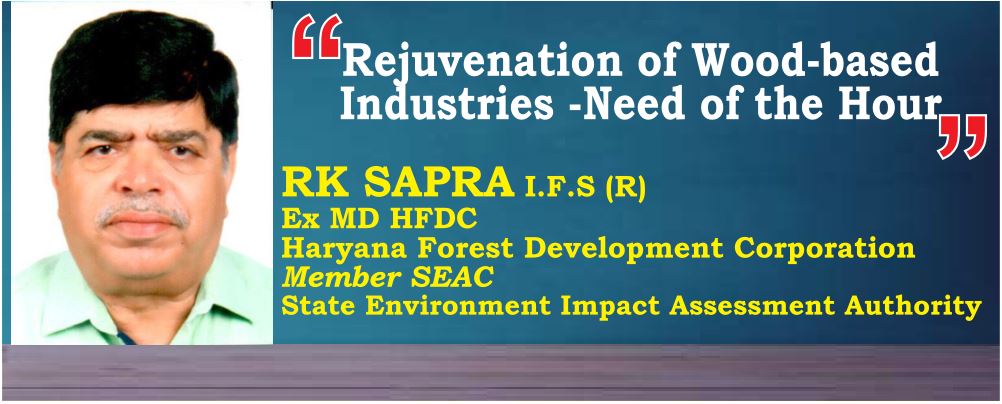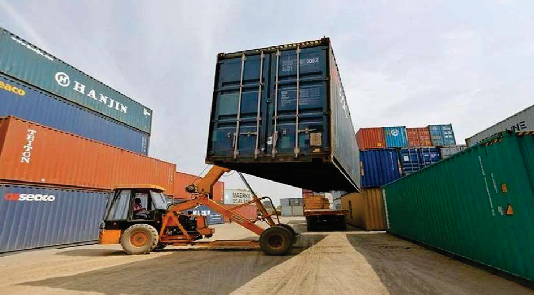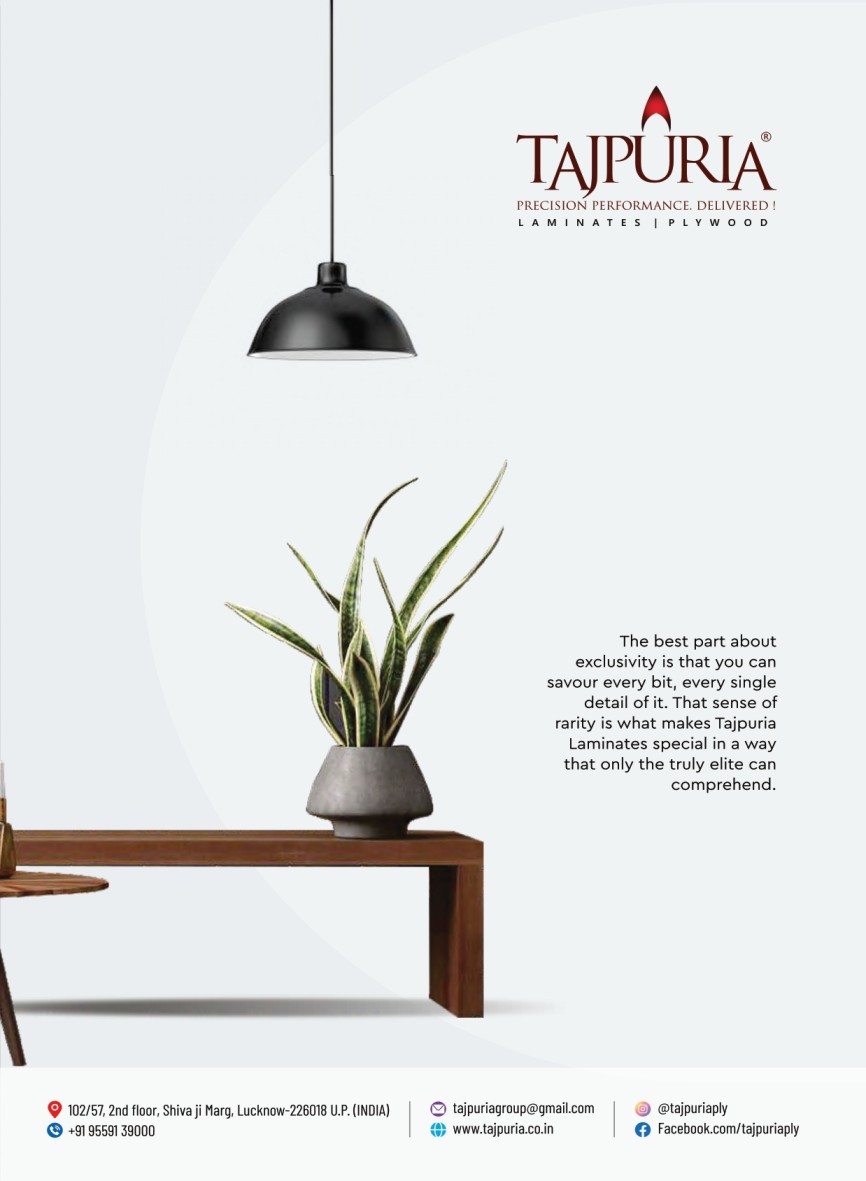
R.K. Sapra I.F.S (R)
- December 8, 2020
- 0

Wood is an integral part of our life since time immemorial as artisans have been using it for making agricultural implements and domestic products. Due to increasing urbanization and industrialization, the use of wood has become commercial in nature. The efficient processing of wood is not so prevalent in our country as majority of units are in the Micro, Small and Medium Enterprises (MSME) sector. With the liberalization of economy in 1991, the demand for wood and wood products has increased at a fast rate, hence their import has increased manifolds in our country.
Status of Wood-based Industries
The wood-based industries may be classified into three categories; sawn wood based (construction, furniture, etc.), composite wood panels and pulpwood based. As per the draft policy paper released by the ‘Network for Certification and Conservation of Forests’, the projected demand of wood for construction and furniture industries is about 2.9 crore cum and 75 lakh cum. This policy paper also reports the paper industry employs more than 10 lakh people in about 800 paper mills across the country and its projected demand of wood is about 3.6 crore cum. As per the report of Indian Plywood Research and Training Institute, plywood, and panel industry, consists of around 3,300 units which provides direct employment to more than 10 lakh people. These industries are generally labour intensive and generate employment mostly for unskilled and semi-skilled persons in urban and rural areas.
Integration of Agroforestry and Wood-based Industries
To meet the shortage of raw materials, WIMCO Seedlings Ltd. (UK) and ITC, Bhadrachalam Paperboard Ltd. (A.P.) promoted the farming of poplar and clonal eucalyptus through providing quality plants, package of practices and assured buy back arrangements in 1984 and 1989. These models have ensured the backward integration of raw material with wood-based industries. Secondly, Yamunanagar city in the state of Haryana which is known as ‘plywood capital’ of the country, has the capacity to manufacture about 45% plywood of the country. The ‘Yamunanagar Model’ in North-West India has developed mainly due to flowing of Yamuna river, highly fertile region, progressive farmers, liberal policies of the Government of Haryana and closure of plywood industries in North-Eastern India. This model has benefitted many stakeholders like farmers, labourers, contractors, transporters, traders and industrialists.
Import and Export of Wood and Wood Products
The landmark judgement of the Hon’ble Supreme Court (1996) in Godavarman case has also regulated logging in government forests. It has resulted in sharp decline in timber production which is stagnating at about 30 lakh cum annually. Presently, most of the demand of timber is met from the Trees Outside Forests (TOFs), mainly the agroforestry. As per India State of Forest Reports (ISFR) being released by the Forest Survey of India bi-annually, the annual potential timber production from TOF in the country was 4.4 crore cum in 2011, 6.9 crore cum in 2015 and 7.5 crore cum in 2017, respectively. To meet the demand of large sized timber, the country has liberalized the import of timber since 1990s which has increased from 25.5 lakh cum in 2001 to about 60 lakh cum presently.
India not only imports wood products like plywood, veneer, particle board, fibre board, pulp and waste-paper, newsprint, paperboards and furniture but also exports most of them except for pulp and waste paper, and newsprint. The exports also include antique furniture, handicrafts, wooden toys and swings. The Indian export and import of wood and wood products have shown a growing trend, however, value of exports is much less as compared to imports implying that India is majorly a wood and wood products importing country with present import bill of about 48,000 crore.
The remaining and concluding part will be published in next issue consisting the following points.
- How to Increase Wood Production?
- Foreign Direct Investment in Wood-based Industries.
- Recent Initiative and Policy Decisions
लकड़ी आधारित उद्योगों का कायाकल्प-आज की जरूरत
प्राचीन काल से ही लकड़ी हमारे जीवन का एक अभिन्न अंग है क्योंकि कारीगर कृषि औजार और घरेलू उत्पाद बनाने के लिए इसका इस्तेमाल करते रहे हैं। बढ़ते शहरीकरण और औद्योगीकरण के कारण, लकड़ी का उपयोग प्रकृति में वाणिज्यिक हो गया है। हमारे देश में लकड़ी का कुशल प्रसंस्करण इतना प्रचलित नहीं है क्योंकि अधिकांश इकाइयां सूक्ष्म, लघु और मध्यम उद्यमों ( MSME) क्षेत्र में हैं। 1991 में अर्थव्यवस्था के उदारीकरण के साथ, लकड़ी और लकड़ी के उत्पादों की मांग तेज दर से बढ़ी है, इसलिए उनके आयात से हमारे देश में कई गुना वृद्धि हुई है।
लकड़ी आधारित उद्योगों की स्थिति
लकड़ी आधारित उद्योगों को तीन श्रेणियों में वर्गीकृत किया जा सकता हैः आरा से कटी हुई लकड़ी आधारित (निर्माण, फर्नीचर आदि), मिश्रित लकड़ी के पैनल और लुगदी आधारित। द नेटवर्क फाॅर सर्टिफिकेशन एंड कंजर्वेशन ऑफ फाॅरेस्ट जारी किए गए ड्राफ्ट पाॅलिसी पेपर के अनुसार, निर्माण और फर्नीचर उद्योगों के लिए लकड़ी की अनुमानित मांग लगभग 2.9 करोड़ वर्ग मीटर और 75 लाख व.मी. है। इस नीति पत्र में यह भी बताया गया है कि कागज उद्योग देश भर में लगभग 800 पेपर मिलों में 10 लाख से अधिक लोगों को रोजगार देता है और इसकी लकड़ी की अनुमानित मांग लगभग 3.6 करोड़ व.मी. है। भारतीय प्लाईवुड अनुसंधान और प्रशिक्षण संस्थान, प्लाईवुड और पैनल उद्योग की (रिपोर्ट के अनुसार) लगभग 3,300 इकाइयां हैं जो 10 लाख से अधिक लोगों को प्रत्यक्ष रोजगार प्रदान करती हैं। ये उद्योग आमतौर पर श्रम गहन हैं और शहरी और ग्रामीण क्षेत्रों में ज्यादातर अकुशल और अर्ध-कुशल व्यक्तियों के लिए रोजगार पैदा करते हैं।
एग्रोफोरेस्ट्री और वुड-आधारित इंडस्ट्रीज का एकीकरण
कच्चे माल की कमी को पूरा करन के लिए, WIMCO Seedings Ltd. (उत्तराखंड) और ITC, भद्राचलम पेपरबोर्ड लिमिटेड, (आंध्रप्रदेश) ने गुणवत्ता वाले पौधे, प्रथाओं के पैकेज और 1984 और 1989 में वापस खरीदने के सुनिश्चित आश्वासन के माध्यम से पोपुलर और क्लोनल यूकेलिप्टस की खेती को बढ़ावा दिया। इन माॅडलों ने लकड़ी आधारित उद्योगों के लिए कच्चे माल के सुव्यवस्थित आपूर्ति को सुनिश्चित किया है। दूसरे, हरियाणा राज्य में यमुनानगर शहर (जिसे देश की प्लाईवुड राजधानी के रूप में जाना जाता है), में देश के लगभग 45 % प्लाईवुड का निर्माण करने की क्षमता है। उत्तर भारत में यमुनानगर माॅडल मुख्य रूप से यमुना नदी के तटवर्थी अत्यधिक उपजाऊ क्षेत्र, प्रगतिशील किसानों, हरियाणा सरकार की उदार नीतियों और पूर्वोत्तर भारत में प्लाईवुड उद्योगों को बंद करने के कारण विकसित हुआ है। इस माॅडल ने किसानो, मजदूरों, ठेकेदारों, ट्रांसपोर्टरों, व्यापारियों और उद्योगपतियों जैसे कई हितधारकों को लाभान्वित किया है।
लकड़ी और लकड़ी के उत्पादों का आयात और निर्यात
गोडावरमन मामले में माननीय उच्चतम न्यायालय (1996) के ऐतिहासिक फैसले ने भी सरकारी जंगलों में प्रवेश को नियंत्रित किया है। इसके परिणावस्वरूप लकड़ी के उत्पादन में भारी गिरावट आई है जो सालाना लगभग 30 लाख व.मी. पर स्थिर है। वर्तमान में, लकड़ी की अधिकांश मांग जंगलों से बाहर के पेड़ों (टीओएफ) से पूरी होती है, मुख्य रूप से कृषि व्यवसाय। भारत के राज्य वन विभाग के रिपोर्ट के अनुसार (आईएसएफआर) जिसे भारतीय वन सर्वेक्षण द्वारा द्विवार्षिक जारी किया जा रहा है, देश में टीओएफ से वार्षिक संभावित लकड़ी का उत्पादन 2011 में 4.4 करोड़, 2015 में 6.9 करोड़ व.मी. और 2017 में 7.5 करोड़ व.मी. था। बड़े आकार की लकड़ी की मांग को पूरा करने के लिए, देश ने 1990 के बाद से लकड़ी के आयात का उदार बनाया है जो 2001 में 25.5 लाख व.मी. से बढ़कर अब 60 लाख व.मी. हो गया है।
भारत न केवल प्लाईवुड, फेसवीनीयर, पार्टिकल बोर्ड, लुगदी (पल्प) और अपशिष्ट-पेपर, अखबारी कागज, पेपरबोर्ड और फर्नीचर जैसे लकड़ी के उत्पादों का आयात करता है, बल्कि लुगदी और बेकार कागज, और अखबारी कागज को छोड़कर ज्यादातर का निर्यात भी करता है। निर्यात में एंटीक फर्नीचर, हस्तशिल्प, लकड़ी के खिलौने और झूले भी शामिल हैं। लकड़ी और लकड़ी के उत्पादों के भारतीय निर्यात और आयात में निरंतर बढ़ोत्तरी दिखाई पड़ रही है, हालांकि, निर्यात का मूल्य आयात की तुलना में बहुत कम है। इसलिए भारत मुख्य रूप से लकड़ी और लकड़ी के उत्पादों का आयातक देश है जिसका इस मद में वर्तमान आयात बिल लगभग 48,000 रुपये का है।
शेष और समापन भाग अगले अंक में प्रकाशित किया जाएगा जिसमें निम्नलिखित बिंदु होंगे ।
1. लकड़ी उत्पादन कैसे बढ़ाएं?
2. लकड़ी आधारित उद्योगों में प्रत्यक्ष विदेशी निवेश।
3. तात्कालिक पहल और नीतिगत निर्णय





























































